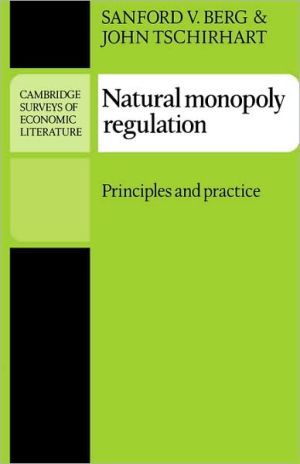

 |

|

Sold Out
Book Categories |
1. Introduction to regulatory economics;
Part I. Optimal pricing and investment for natural monopolies:
2. Natural monopoly and the justification for regulation;
3. Efficient pricing using linear prices;
4. Efficient pricing using nonlinear prices;
5. Peak-load pricing;
6. Pricing and capacity under stochastic demand;
7. Sustainability of natural monopolies;
Part II. Natural monopoly regulation in practice:
8. Regulation in practice: Why and how are firms regulated?;
9. Models of regulatory constraints;
10. Technological change under regulation;
11. Partial regulation, deregulation, and diversification;
12. Alternatives to traditional regulation.
Login|Complaints|Blog|Games|Digital Media|Souls|Obituary|Contact Us|FAQ
CAN'T FIND WHAT YOU'RE LOOKING FOR? CLICK HERE!!! X
 You must be logged in to add to WishlistX
 This item is in your Wish ListX
 This item is in your CollectionNatural Monopoly Regulation
X
 This Item is in Your InventoryNatural Monopoly Regulation
X
 You must be logged in to review the productsX
 X
 X

Add Natural Monopoly Regulation, Considered the cutting edge of microeconomic theory in the 1970s, natural monopoly research remains an active and fertile field. Policy makers and regulators have begun to implement entry and pricing policies that are based on theoretical and empirical an, Natural Monopoly Regulation to the inventory that you are selling on WonderClubX
 X

Add Natural Monopoly Regulation, Considered the cutting edge of microeconomic theory in the 1970s, natural monopoly research remains an active and fertile field. Policy makers and regulators have begun to implement entry and pricing policies that are based on theoretical and empirical an, Natural Monopoly Regulation to your collection on WonderClub |